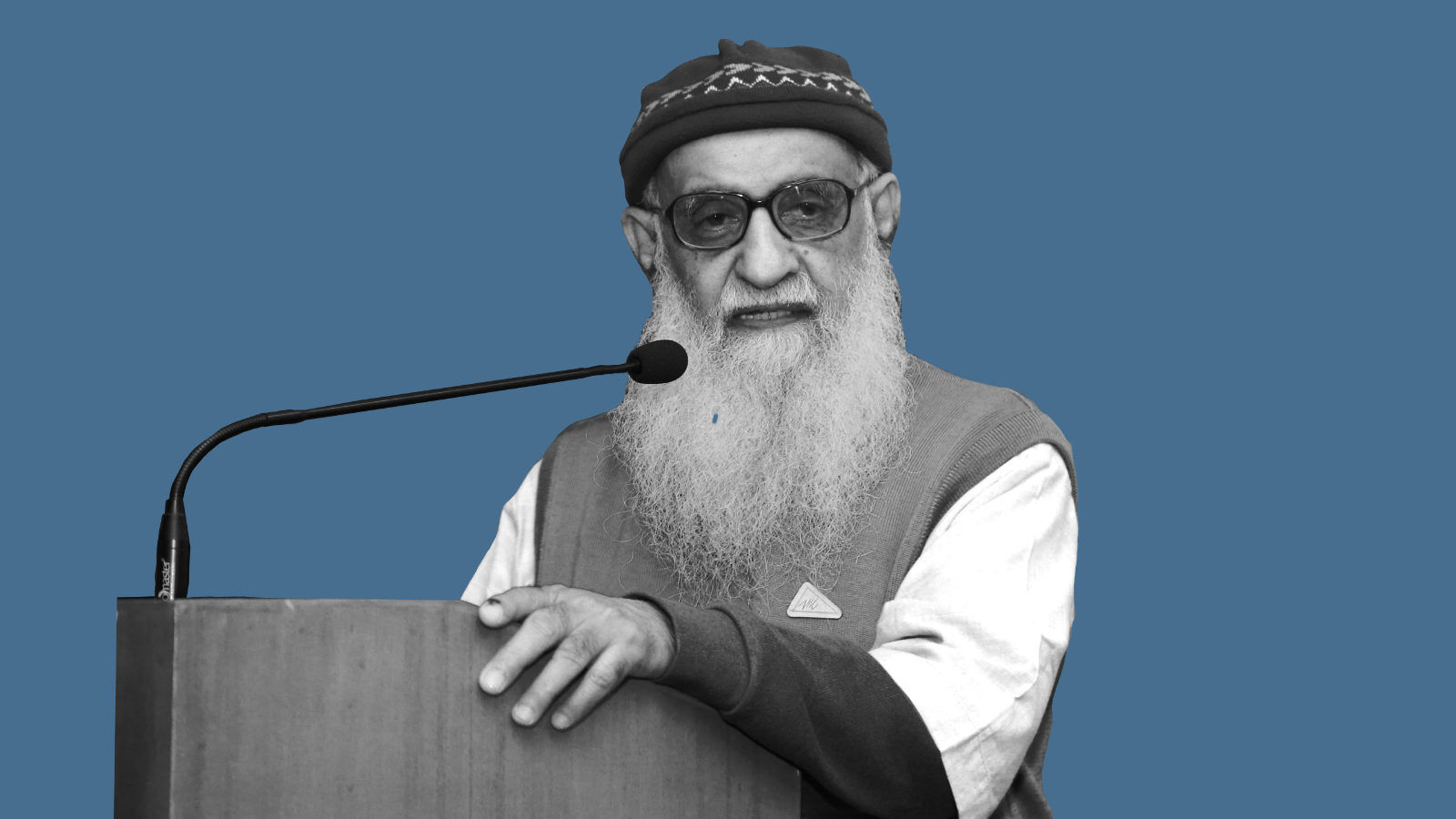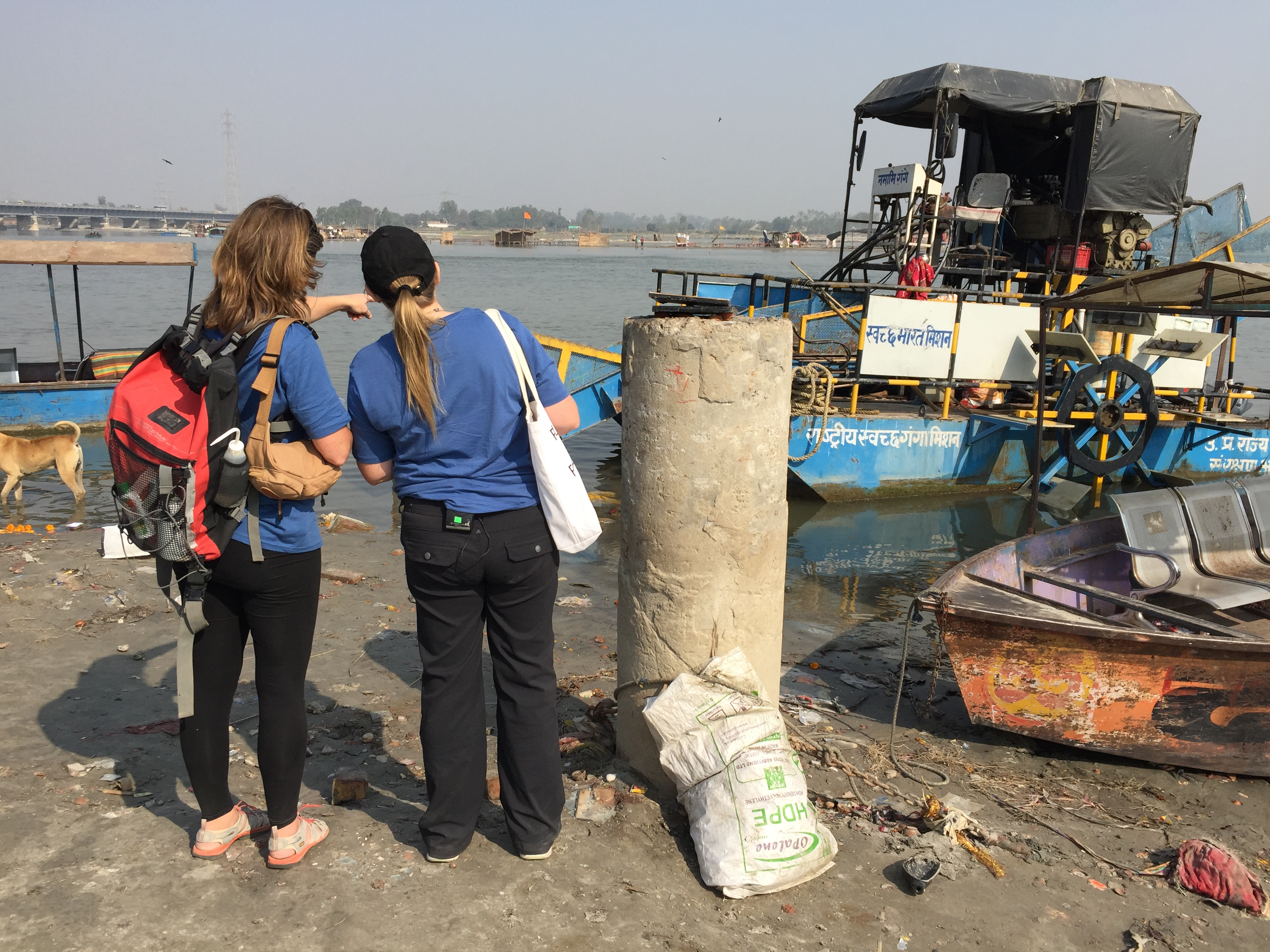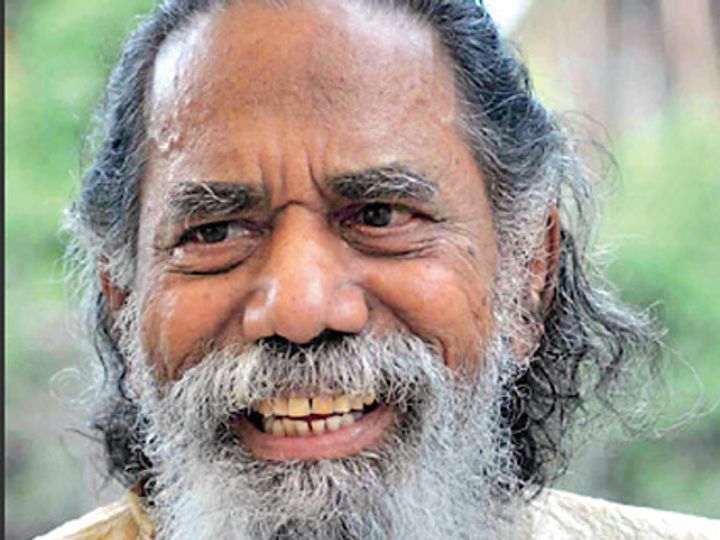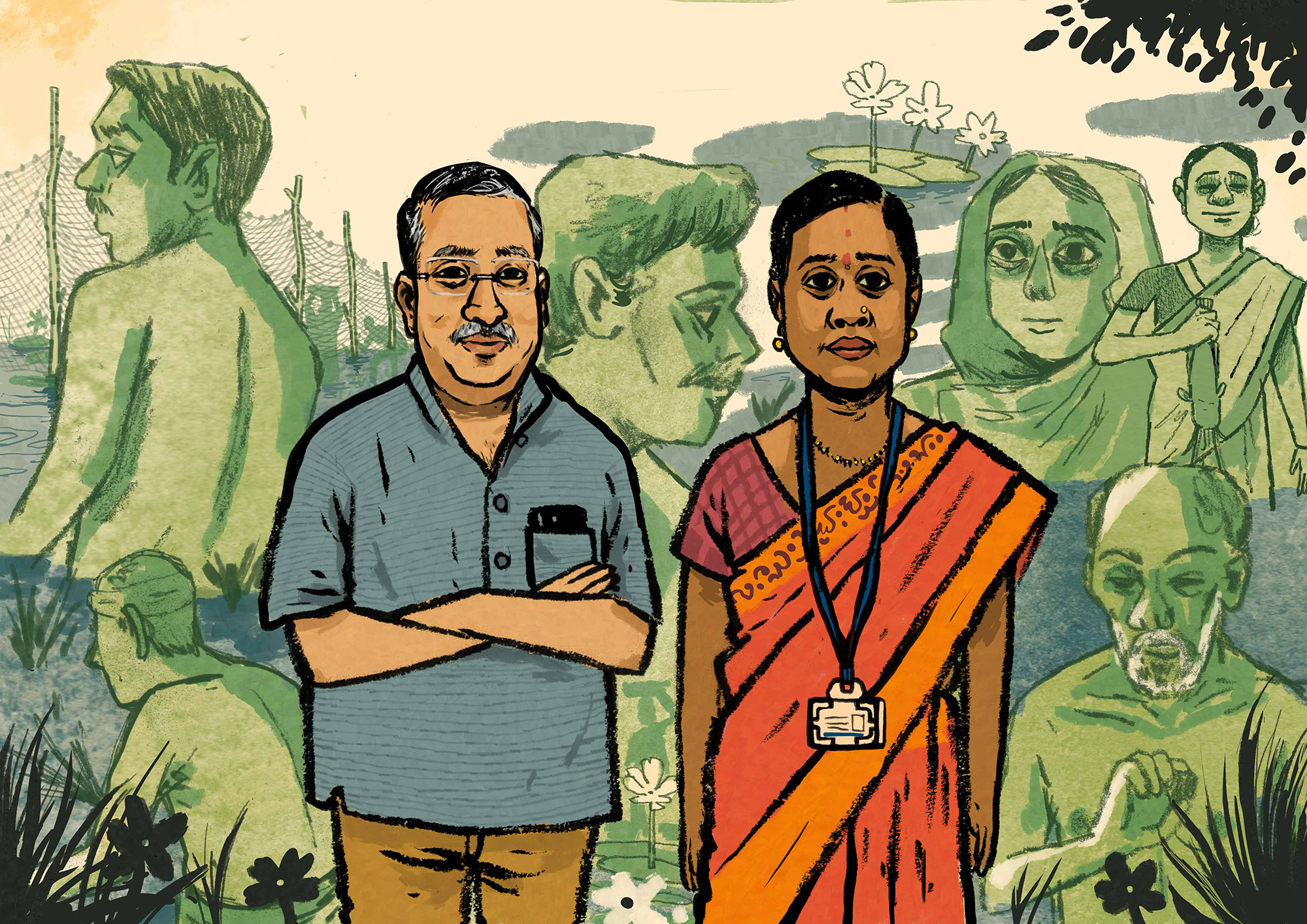1. What is the difference that you have noticed about people/officers talking freely pre-Modi and post-Modi?
• Thirteen (26%) said officials, secretaries, joint secretaries, directors etc were still talking.
• Seventeen said they were “not talking at all” (34%).
• In other words, 74 per cent had sensed a clamming up.
2. Is your beat minister talking as freely as the earlier one?
• Another sixteen (32%) said “not talking at all”.
• So 64 per cent reported that beat ministers were talking less freely or not at all.
3. Is your beat minister talking ‘off the record’?
• And most of them, 19, (38%) said they “didn’t talk, even off the record”.
• Again, the majority, 68 per cent, felt the beat minister had dried up substantially as a source.
4. Are your sources talking as freely as earlier?
• Twenty-three (46%) said, sources did talk but “but with lot of cajoling, coaxing etc.”
• Combining the last two, a worrying 66 per cent journalistssaid their sources were not opening up easily, or not opening up at all.
5. (Then) how are you doing stories these days?
• Rest — 27 (54%) — said they were tapping not just their sources, but also various other options such as other stakeholders, information available on the websites etc.
6. Is there any way in which this lot is an improvement over the last one?
We as journalists observe a given government as an establishment, irrespective of the party in power. This question was to find out, as a government, how this lot fared.
• Sixteen (32%) respondents said, they noticed “visible changes” in the manner in which officials worked/were present etc;
• Nineteen (19%) either did not say anything or said, “It is too early to judge”.
So what are the changes that journalists have felt?
The first and the foremost: Cabinet notes are not available. Earlier it was a free-for-all. Neither cabinet meeting agendas nor inter-ministerial exchanges are coming out, not before and not after the cabinet meetings, except what the government wants to come out.
One example is the decision to shut down the Planning Commission and replace it with the NITI Aayog. “RTI queries revealed later that this decision was cleared by the cabinet two days before – August 13 – but it took the Prime Minister to announce it on Independence Day from the ramparts of the Red Fort. None of us could bring that out before,” said a journalist who regularly uses RTI for big-ticket stories.
When it came to officials talking – secretaries, joint secretaries, directors et al, in short the entire leaky babudom – there is a visible fear psychosis. Generally, there is an increased level of awareness, people are careful not to speak on phone and if they speak at all, prefer landlines to mobiles phones.
When journalists do manage to get people to talk, they get plenty of information but nothing worthwhile. For instance, there is a lot of talk about ‘Smart Cities’ but so far, the government has not produced a concept note.
“The whole government seems to be PMO driven. There aren’t many internal differences between the government’s arms,” observed one senior reporter from a mainstream newspaper.
Varghese George, the Hindu‘s National Affairs and Political Editor, said: “This government appears more determined, purposeful (compared with UPA). It is also taking swift decisions. But certain things are bound to come out. And they should.”
He elaborates with an example about the Land Acquisition ordinance. Around December end, contrarian voices started coming out from within the government. Stories about the various clauses that were deemed problematic were carried by several media organisations, including The Hindu, showing finally how differing voices are coming out from within the government and of course other stake holders.
“There are multiple pressure points, lots of stake holders will try to influence decision making and there is generally bound to be chaos, but this same process ensures that these voices are heard. But in the absence of inadequate internal debate, it is happening at the cost of the democratic process,” he said.
The pink papers are the most affected. Earlier, there used to be reams of paper landing on their desks. Corporate lobbyists and big company officials could all be found loitering in the ministries. “The new government has ensured no entry to any such persons, there is a severe crunch of paper flow,” said a journalist from one of the business papers. (See postscript.)
Those covering political beats and different ministries relied heavily on ‘favouring someone’ ministers or ‘dial-a-quote’ officials. “Now this celebrity access journalism has stopped. If you are a practitioner of good old style journalism, you still get information,” said an award-winning journalist from a mainstream newspaper.
Pankaj Vohra, Managing Editor, the Sunday Guardian, said: “The job of a journalist is to get information, not to blame the government for his inefficiency. If you can’t find (information) you are not worth your salt.”
The innovative use of social media has seen news breaking first on Modi’s Twitter handle rather than through a PIB release or a journalist. The best example was when US President Barack Obama was to visit Delhi as chief guest at the Republic Day parade. “Earlier this kind of news could easily have been ‘handed out’ to some celebrity journalist and it would have been her exclusive. Now, by tweeting about it, Modi has sought to bring in democratization of news,” said a journalist from an English daily.
“Those journalists were entrenched, they had access and so had exclusive information. Now, there is democratization of news, so they are cribbing,” he added.
Nirendra Dev, Special Correspondent with the Statesman, said: “Media persons had a certain comfort zone. Those who had turned into armchair journalists are unhappy. Stories are not being done on the information that the government wants to hide.”
In fact, this ‘entrenched’ journalist phenomenon also has another side to it as one prolific journalist pointed out: “There is so much information in the public domain. Parliamentary questions, parliament committees, consultants, NGOs and several stakeholders. Handout journalists – the lazy bones – simply don’t tap sources enough and instead rely on whatever information they can squeeze from a friendly minister. The information flow has not stopped, just that the ease with which one gets information has changed.”
Journalists from regional newspapers continue to tap ministers/MPs from their respective states. “English newspapers are doing something or the other, but most Hindi newspapers are coming out with what the government doles out,” said a Political Editor from one of the Hindi newspapers.
Cabinet ministers indulging journalists in Central Hall is almost a thing of the past. After the first few months of no-talk, however, a few ministers are slowly beginning to talk. Inevitably these are the same ministers who talk with the media otherwise – Arun Jaitley, Nitin Gadkari, Prakash Javadekar and Ravi Shankar Prasad. “But what are they going to talk about? They themselves are out of the loop most of the time,” said a journalist who is a regular at Central Hall.
Comparison with the UPA regime was inevitable. Scams apart, there was a lot of internal bickering that found its way out to media. But now the picture has changed. “Earlier, during UPA time, the government had many loose canons and there was lot of cacophony and confusion. It suited the media but not the government. This government is streamlining everything and prioritizing governance,” said a bureau chief.
Two prominent takeaways
1. Despite the general atmosphere of not talking to the media, ministers such as Arun Jaitley (whose evening durbars with journalists are much talked about), Nitin Gadkari, Uma Bharti, Venkaiah Naidu, Prakash Javadekar and Suresh Prabhu talk freely or at least do not evade queries.
In contrast, Rajnath Singh, who as the BJP chief was very media savvy, is reserved when it comes to meeting the media as the Home Minister. Singh, it seems, has finally started to settle down in the ministry. A few reporters who cover the ministry say that he is now starting to talk. “The kind of stories originating in the Ministry of Home Affairs are a testimony to the fact that slowly and steadily, cracks are appearing,” said a reporter.
The worst track record belongs to Minister of Human Resources Development SmritiIrani. Apparently, she has terrorized her officers so much they don’t even allow journalists to enter their rooms.
2. In general, the picture that has emerged is that the journalists covering ministries that are part of the Cabinet Committee on Security – Home, External Affairs, Finance, Defence and Human Resources Development – are the ones facing the most problems accessing information, along with business journalists. As against that, there appears to be no clampdown on development beats/ministries.
But this government’s extra-sensitivity towards information leaks can be dangerous for the government itself. As a journalist from a regional newspaper said: “Sometimes rumours are passed on as news. There is deadline pressure, there is pressure from the editor so if a journalist does not get any official word and he goes ahead with the story based on the information he has, it can be counterproductive for the government.”
Off the record quotes:
Q: What is the difference that you have noticed about people talking freely pre-Modi and post-Modi?
“You call up or write in a mail asking specific queries, they send out a statement never answering any specific queries.”
“Not really. People with whom you have a rapport, they are still talking. It depends on person to person.”
“Only those people who are hurt in some manner are talking. These are those people who have been forced to abandon certain habits. For instance, the biometric attendance system has meant better attendance even if that means for many, it is something against their habits of years. Or those whose comfort zone is disturbed (ahem, you know what it means), they are talking.”
“In beats such as IB, R&AW, CBI/NIA, people have always been reluctant. Those who spoke earlier, continue to speak now too.”
“If you are not dependent on PROs and you have a personal rapport with officials, ministers, the information flow never stops. If you have a good network, your sources never dry up.”
Q: Is your beat minister talking as freely as the earlier one?
“In financial ministries, it is a sort of mehfil of reporters, easy information but restricted to sectoral information.”
“Even the press conferences in finance/business/coal/power ministries are so structured, not a word extra comes out, only as much as the government wants.”
“Some ministers, for instance Prakash Javadekar, Arun Jaitley, Nitin Gadkari, Uma Bharti, speak quite freely. But again, the kind of information that they share is what the government wants. Unlike Congress ministers, these BJP wallahs don’t speak against each other. No juice.”
Q: Is your beat minister talking ‘off the record’?
“Nirmala Seetharaman does not talk much.”
“Politicians are mercurial. If you pursue them sincerely, they eventually start talking, at least off the record.”
Q: Are your sources talking as freely as earlier?
For certain sensitive beats, such as Atomic Energy, earlier sources could be reached on their mobile phones, anywhere, all the time. “Now, they talk only and only on landlines.”
“Sources are talking. Maybe this dispensation is not as porous as the UPA regime …par koi toh hai bol raha hai. Varna stories jo bhee ho rahee hai, kaise ho rahee hai?”
The most negative comments were about the Human Resources Development Ministry. There are virtual gag orders and officers do not just prevent the entry of journalists into their rooms, they fear being seen with journalists outside. “I try to catch hold of HRD babus at sarkari functions, literally stealing away a minute or two of their time in chaos.”
“I have been covering the ministry for years now, so sources are good. But even they are not talking directly, they drop hints.”
“This December 25 as Good Governance Day controversy — what we do is monitor the ministry website. That becomes our source.”
“I really doubt how long this can go on. More you clamp down, more people will be willing to talk. Soon.”
“I do a story relying on my sources and she holds the joint secretary of that department responsible for it. He has not even spoken with anyone but bechara is at the receiving end.”
Q: (Then) how are you doing stories these days?
“Earlier there used to be ample ‘plants’ which are not happening – almost nil – nowadays.”
“Spoon feeding has stopped, the journalists have to earn their story now.”
“Also depends if the editors or the reporters are ready to take on the PM.”
“Journalists need to be enterprising. After the first six water-tight months, we should now be able to crack in.”
Q: Is there any way in which this lot is an improvement over the last one?
“BJP ministers Modi ko aajma rahe hain, Modi apne ministers ko aajma rahe hain (BJP ministers are trying Modi and Modi is trying his ministers).”
“Thanks to the biometric attendance system, people are found in the office.”
“There is a perception about change since Modi came, but nothing much has changed on the ground. For example, he introduced this Skill Development Ministry. Very good concept, but last I checked, it still had no office.”
“This government is anti-people, anti-poor, anti-tribal, anti-have-nots. Presumably it is pro-corporate, pro-upper class.”
“This government is still struggling to establish itself politically. Largely, bureaucrats are against change. Bureaucratic opposition from within is a bigger problem for this government. Modi’s action and conduct will put him in conflict with ministers and bureaucrats.”
“All ministers keep praising Modi every time and anytime. But they don’t just stop at it. They make sure that they don’t speak a negative word about Modi. Just like Shani Dev!”
“The analogy can be fitting to the BJP’s pro-Hindutva image. If you are a devout, you pray to Lord Ram, talk with him, talk about him and possibly say sometimes, ‘See, Ram has not done this for me.’ But you will never ever say any such thing and dare to offend Shani Dev. Ditto for Modi. None of the ministers will say a single negative word — not even off the record — about him.”
About the respondents
The 50 respondents are all based in Delhi. Considering that the visual medium deals with stories differently, the respondents were all from the print media and almost all from English newspapers in the national capital (in alphabetical order): Asian Age, Business Standard, Deccan Herald, Economic Times, Hindustan Times, Indian Express, Mail Today, Mint, Pioneer, Statesman, Telegraph, The Hindu, Times of India and the Press Trust of India.
Some were from the major Hindi newspapers, including Amar Ujala, Dainik Bhaskar and Dainik Hindustan, apart from a host of Delhi correspondents of regional newspapers from: Maharashtra, Odisha, Karnataka, Andhra Pradesh, Tamil Nadu, Kerala, Goa, Gujarat, Chandigarh and West Bengal.
These 50 included reporters (principal correspondents, special correspondents), state correspondents of papers outside Delhi, bureau chiefs, and political editors/managing editors.
Post script
** The arrest of Reliance officials and a former journalist among others in #Corporate Espionage and the latest #EssarLeaks have, in a way, come as a validation of what journalists from the pink papers have been saying, ie, no papers are doled out, there is a complete crackdown on lobbyists and, in general, journalists used to ‘hand outs’ are finding it difficult to survive.
** In January, Modi held an informal lunch meeting with ‘chosen’ editors following which even some ministers started informal lunch meetings with beat reporters. Smriti Irani is one of them.
(This was first published by The Hoot on March 3, 2015 and can be read here http://thehoot.org/web/home/storypage.php?storyid=8130&mod=1&pg=2§ionId=15&valid=true







